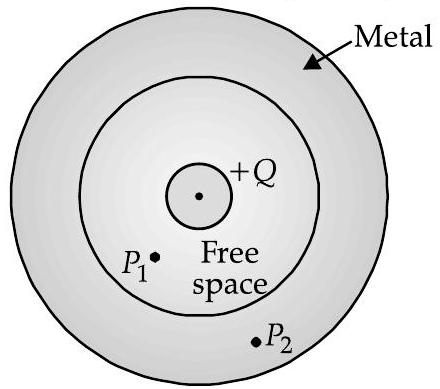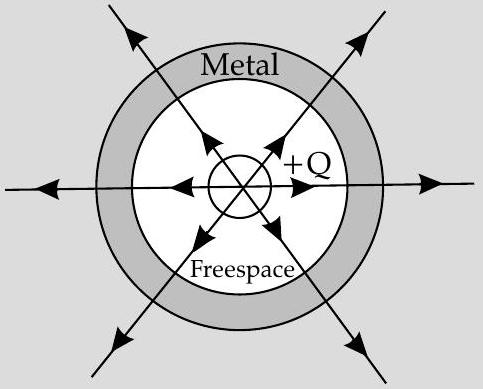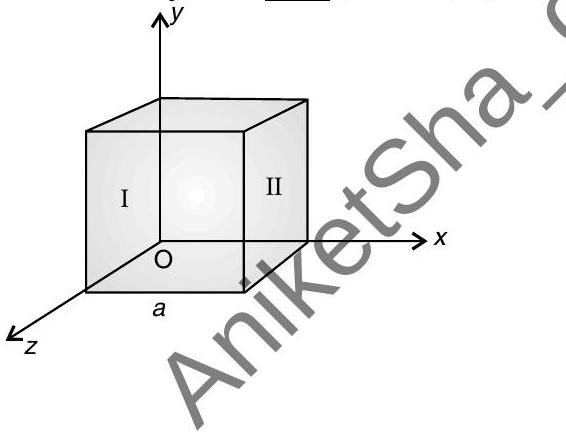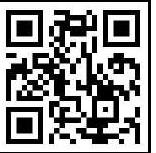Question: Q. 6. (i) Define electric flux. Write its S.I. unit.
(ii) A small metal sphere carrying charge

(iii) Draw the pattern of electric field lines in this arrangement. [Delhi, O.D. Comptt. I, II, III, 2012]
Show Answer
Solution:
Ans. (i) Try yourself, Similar to Q. 2, Very Short Answer Type Questions
(ii) Try yourself, Similar to Q. 12, Short Answer Type Questions-II (iii) The direction of electric field is shown in the figure.

[CBSE Marking Scheme, 2012]
[IIQ.7.(i) An electric dipole of dipole moment
(ii) Given the electric field in the region

Ans. (i)

Electric field intensity at point
$$ \vec{E}{-q}=\frac{1}{4 \pi \varepsilon{0}} \cdot \frac{-q}{(x+a)^{2}}(\hat{x}) $$
Due to charge
$$ \vec{E}{+q}=\frac{1}{4 \pi \varepsilon{0}} \cdot \frac{q}{(x-a)^{2}}(\hat{x}) $$
Net electric field at point
$$ \begin{aligned} & \vec{E}=\vec{E}{-q}+\vec{E}{+q}^{+q} \ & \vec{E}=\frac{q}{4 \pi \varepsilon_{0}} \times\left(\frac{1}{(x-a)^{2}}-\frac{1}{(x+a)^{2}}\right)(\hat{x}) 1 / 2 \end{aligned} $$
FFor
(ii) From the given diagram,
Only the face perpendicular to the direction of
Total flux
Charge enclosed,
OSWAAL LEARNING TOOLS
For Suggested Online Videos

Or Scan the Code






